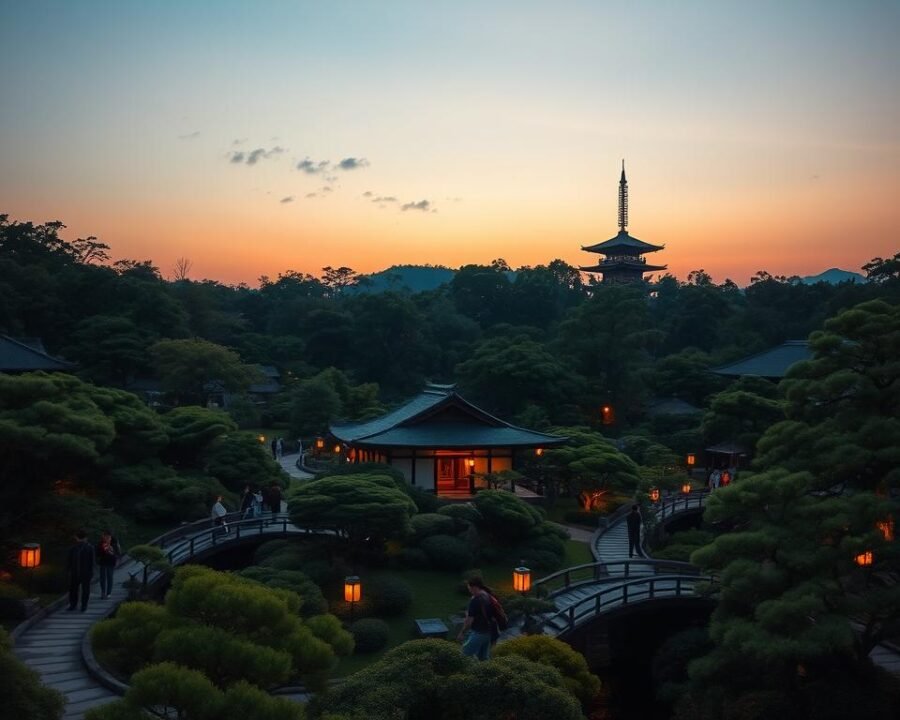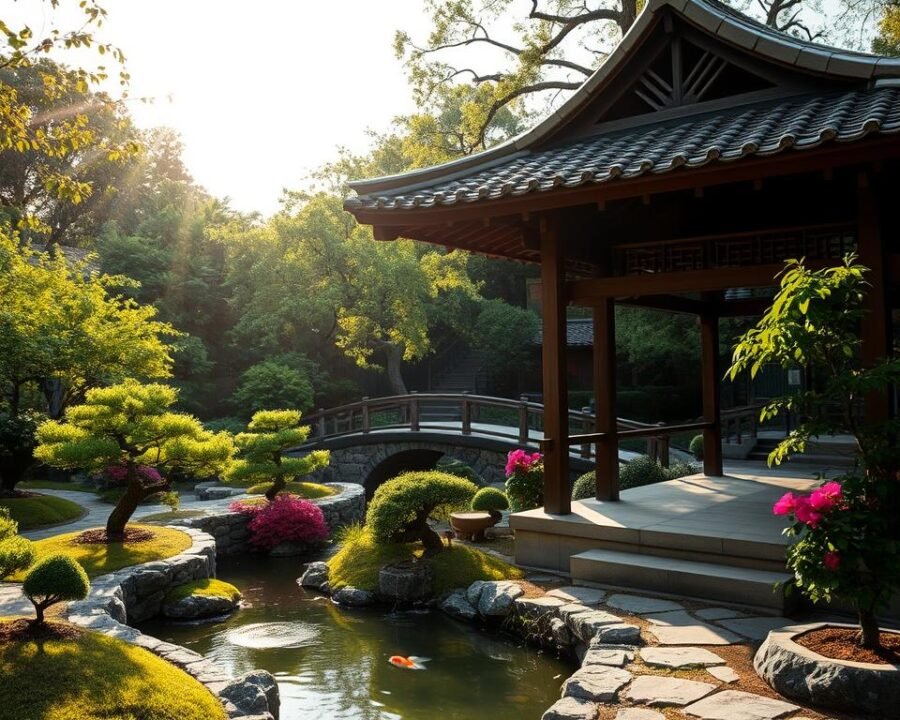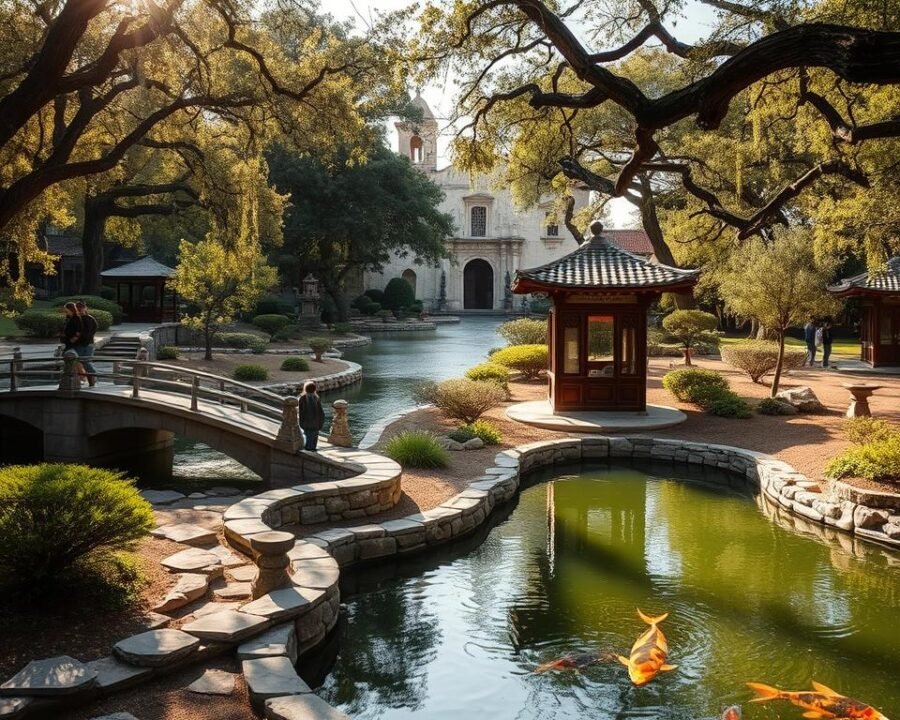Imagine stepping into a serene oasis where the hustle and bustle of daily life fades away. The San Antonio Japanese Tea Garden offers just that—a peaceful retreat nestled in the heart of the city. Once a historic quarry, this site has been transformed into a lush, tranquil space that invites visitors to unwind and reconnect with nature.
With free admission and timed entry windows, planning your visit is simple. Whether you choose a morning or afternoon session, you’ll have the chance to explore iconic features like the 60-foot waterfall, koi ponds, and unique faux bois stone architecture. The garden’s accessible pathways make it a family-friendly destination, perfect for creating lasting memories and capturing beautiful photos.
While the garden is open daily, it’s important to note seasonal closures due to rain or major holidays like Juneteenth. To make the most of your experience, plan ahead and arrive on time, as visits are limited to 2.5 hours. Don’t forget to check out Jingu House, the on-site restaurant offering delicious Asian cuisine with a local twist.
Key Takeaways
- Free admission with timed entry windows for morning and afternoon sessions.
- Explore iconic features like the 60-foot waterfall and koi ponds.
- Family-friendly with accessible pathways and photo opportunities.
- Seasonal closures for rain and major holidays like Juneteenth.
- Visit Jingu House for a unique dining experience within the garden.
About the San Antonio Japanese Tea Garden
Step into a space where history and nature blend seamlessly. This iconic location has evolved from a limestone quarry to a cultural landmark, offering visitors a serene escape. Its transformation is a testament to resilience and vision.
History and Significance
Built between 1918 and 1919, this site was originally a quarry. Prison labor was used to carve out its unique stone structures. During World War II, the garden’s name was changed due to anti-Japanese sentiment, reflecting a challenging chapter in its history.
From 1926 to 1942, the Jingu family operated a restaurant here, adding to its cultural richness. The garden also features Dionicio Rodriguez’s 1942 faux bois torii gate, a historical artifact that stands as a symbol of its enduring legacy.
Key Features of the Garden
The garden is home to a stunning 60-foot waterfall and a massive koi pond with floating islands. Visitors can admire the restored pagoda from the 1915 Panama-Pacific International Expo, a piece of history that adds to the site’s charm.
Architectural highlights include the quarry-carved pavilion and the humped dragon bridge. The stacked limestone pillars and trabajo rustico benches showcase the intricate stonework that defines the garden’s unique architecture.
Seasonal blooms like Japanese maples, cherry blossoms, and wisteria add vibrant colors throughout the years. Wildlife enthusiasts can spot cormorants, anoles, and prize-winning koi, making every visit a new experience.
Planning Your Visit

Make the most of your time by understanding the details of your visit. This serene destination offers a peaceful retreat, but knowing the logistics ensures a smooth experience. From hours of operation to parking tips, here’s everything you need to plan your trip.
Hours of Operation
The garden is open Monday through Thursday, with morning and afternoon sessions. Morning hours run from 9:30 AM to 12 PM, while afternoon hours are from 1 PM to 3:30 PM. Note that the site is closed Fridays through Sundays.
Each visit is limited to 2.5 hours, with the last entry allowed 15 minutes before closing. Be sure to arrive on time to maximize your experience.
Admission and Ticket Information
Admission is free, making it an ideal destination for family outings. During reservation system maintenance, walk-ins are accepted. Groups of 10 or more must call ahead on the day of their visit for capacity checks.
For special events, it’s best to check availability in advance. Prohibited items include food and drinks (except water) and tripods for photography.
Directions and Parking
Located in Brackenridge Park near downtown, the garden is easily accessible. Parking requires a security gate check-in before accessing the lot. During peak seasons or special events, arrive early to secure a spot.
Public transportation options are available via VIA Metropolitan Transit, making it convenient for all visitors. Nearby attractions include the San Antonio Botanical Garden and the McNay Art Museum, perfect for extending your day.
What to Expect During Your Visit

Discover a world of tranquility and beauty during your visit. This serene destination offers a mix of natural wonders, cultural experiences, and family-friendly activities. Whether you’re here to explore the lush landscapes or enjoy a traditional tea service, there’s something for everyone.
Garden Highlights and Attractions
The tea garden is home to a stunning 60-foot waterfall and a massive koi pond with floating islands. Walk across the stone bridge to admire the restored pagoda, featuring nightingale floors that chirp when walked on. The cliffside trail offers panoramic views of the quarry, making it a favorite spot for photographers.
Seasonal blooms like azaleas and cherry trees add vibrant colors, especially in March and April. Don’t miss the chance to join SF City Guides-led walking tours, which explain the zen garden elements and Buddhist symbolism.
Family-Friendly Activities
Families will love the interactive experiences, such as koi feeding stations and scavenger hunts. Kids can spot anole lizards or explore the pagoda’s unique features. The accessible pathways ensure everyone can enjoy the beauty of the tea garden.
For educational fun, docent tours provide insights into the garden’s history and design. Seasonal photo ops and cultural workshops during monthly Sunday openings add to the excitement.
Tea House and Refreshments
The on-site tea house offers a 60-minute traditional tea service at irori tables. Savor matcha and mochi desserts while soaking in the peaceful ambiance. The gift shop is a must-visit, featuring authentic tea sets, daruma dolls, and limited-edition blends.
During extended summer hours, the evening ambiance is perfect for a relaxing stroll. For more details about the garden’s features, visit the official website.
| Activity | Details |
|---|---|
| Walking Tours | Led by SF City Guides, explaining zen garden elements. |
| Seasonal Blooms | Azaleas and cherry trees in March-April. |
| Tea House | 60-minute traditional tea service with matcha and mochi. |
| Family Activities | Koi feeding, scavenger hunts, and anole lizard spotting. |
Conclusion
Wrap up your journey with a perfect blend of culture and nature. This serene garden offers a unique experience, combining Japanese aesthetics with Texan materials. Before your visit, check the website for last-minute weather updates to ensure a smooth trip.
For exclusive benefits, consider joining membership programs. Stay updated on seasonal highlights by subscribing to the newsletter for cherry blossom bloom alerts. Remember to follow garden etiquette, such as staying on paths and embracing quiet reflection.
Don’t miss upcoming events like the Autumn Moon Festival and New Year’s bell ringing. As one recent visitor shared, “The koi pond’s tranquility is unmatched.” Plan early for peak spring blooms and make the most of your visit.
